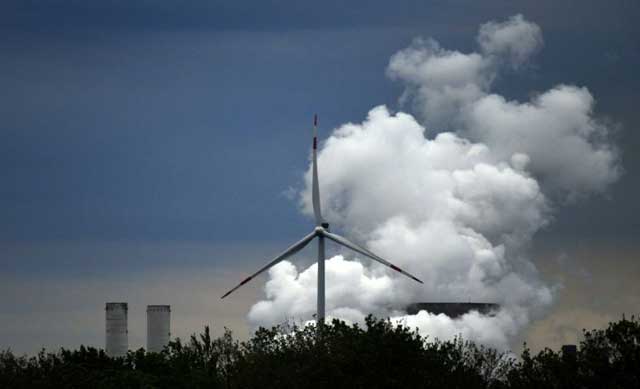
Paris, France | AFP | It’s a jungle out there as responsible finance investors seek ways to fund a green future for the planet.
Here is a look at key terms used in the “green” investment world, and whether its various schemes are having a positive impact.
– SRI or ESG? –
“Green” investment is designed to finance projects that protect the environment or enable firms to make the transition from harmful to ecologically friendly production methods.
Such investments must meet a range of green-friendly principles: known either as Socially Responsible Investment (SRI) or Environmental, Social and Governance (ESG) criteria.
Investors can, for example, exclude stakes in firms engaged in activities that pollute and focus on companies which prioritise green projects.
– Fossil fuel, nuclear divide –
Opinions are divided on whether to help oil groups or promote nuclear energy, or both.
A $560 million green bond launched by Spanish energy firm Repsol in 2017 to bolster its efficiency sparked a heated debate on what constitutes green investment.
As for nuclear energy, French Finance Minister Bruno Le Maire courted controversy with a push for nuclear to be brought under the EU’s “green investment label” to make it eligible for financial support.
– Sustainable investments –
Green bonds — bonds that finance green projects with clearly set environmental criteria — are the most prevalent vehicles for green finance.
But green investments might also include a portfolio of shares in firms that invest in renewable energy.
In addition, they can subsidise lower-cost loans for projects that meet ESG criteria.
Julien Brune at Societe Generale’s corporate and investment banking unit and Stephane Marciel, head of the bank’s sustainable bonds and debt capital markets, say that in 2018, of a global $92 trillion in assets, around $30 trillion could be considered sustainable.
Europe is in the lead with a little more than $14 trillion in sustainable investments, while North America is a close second at $13.7 billion. Asia clocks in at $2.2 trillion, they estimate.
Noemie de la Gorce, sustainable finance analyst with S&P Global Ratings, noted a groundswell of investment as investors “race to show they can participate in financing efforts to limit climate change”.
– Unregulated –
There are no international regulations that control green finance.
But most of those in the sector adhere to the general principles of the International Capital Market Association (ICMA), according to Frederic Gabizon, head of Debt Capital Markets at HSBC France.
The publication in June by the European Commission of a classification system is seen by the industry as a major step forward, though it is not binding at this stage.
– Greenwashing –
As society attaches more importance to businesses being environmentally responsible, the incentive for firms to overstate their efforts has increased — a practice dubbed greenwashing.
“Even if outright lies are thankfully rare, bad practices exist and some abuse environmental arguments,” said the Forum for Sustainable and Responsible Investment, an association that includes representatives from the finance sector and non-governmental organisations.
Engaging in greenwashing carries risks, as corporate reputations can be damaged and investors can cut off funding.
Ratings agencies, which previously looked almost exclusively at financial and economic indicators, have felt the shifting winds.
Moody’s and S&P have recently invested in small companies that specialise in evaluating companies on ESG criteria.
– Evaluating impact –
Green finance is heavily dependent on determining what is green and evaluating impact, which isn’t always straightforward.
“For renewable energy, it isn’t very controversial to say it has a positive impact,” de la Gorce notes.
“But in the case of electric cars, the reduction of emissions must be balanced with the impact from the extraction of materials necessary for its battery,” the analyst added.
“Demonstrating the real impact is the most important challenge for the future of responsible investment,” she concluded.
 The Independent Uganda: You get the Truth we Pay the Price
The Independent Uganda: You get the Truth we Pay the Price



